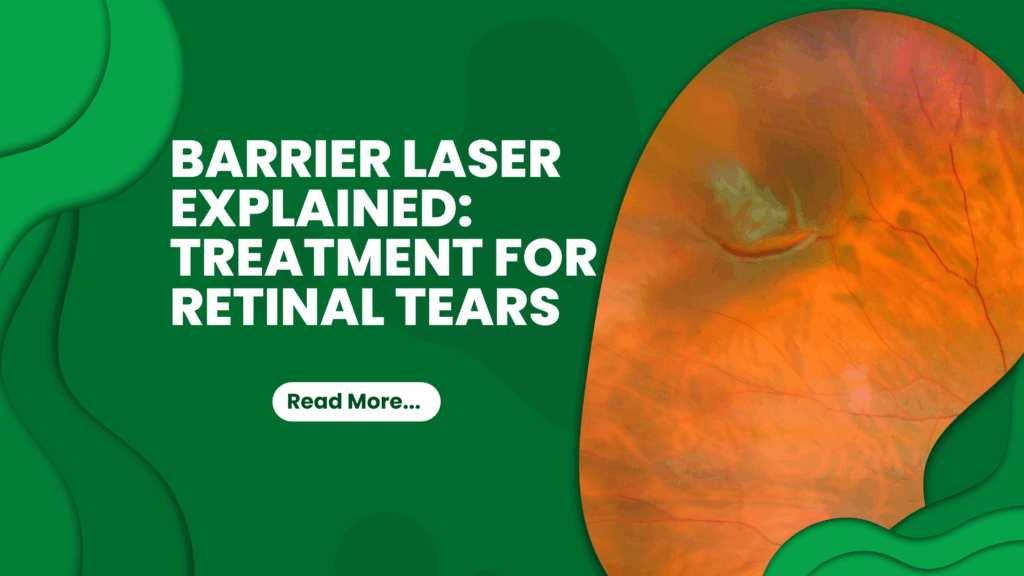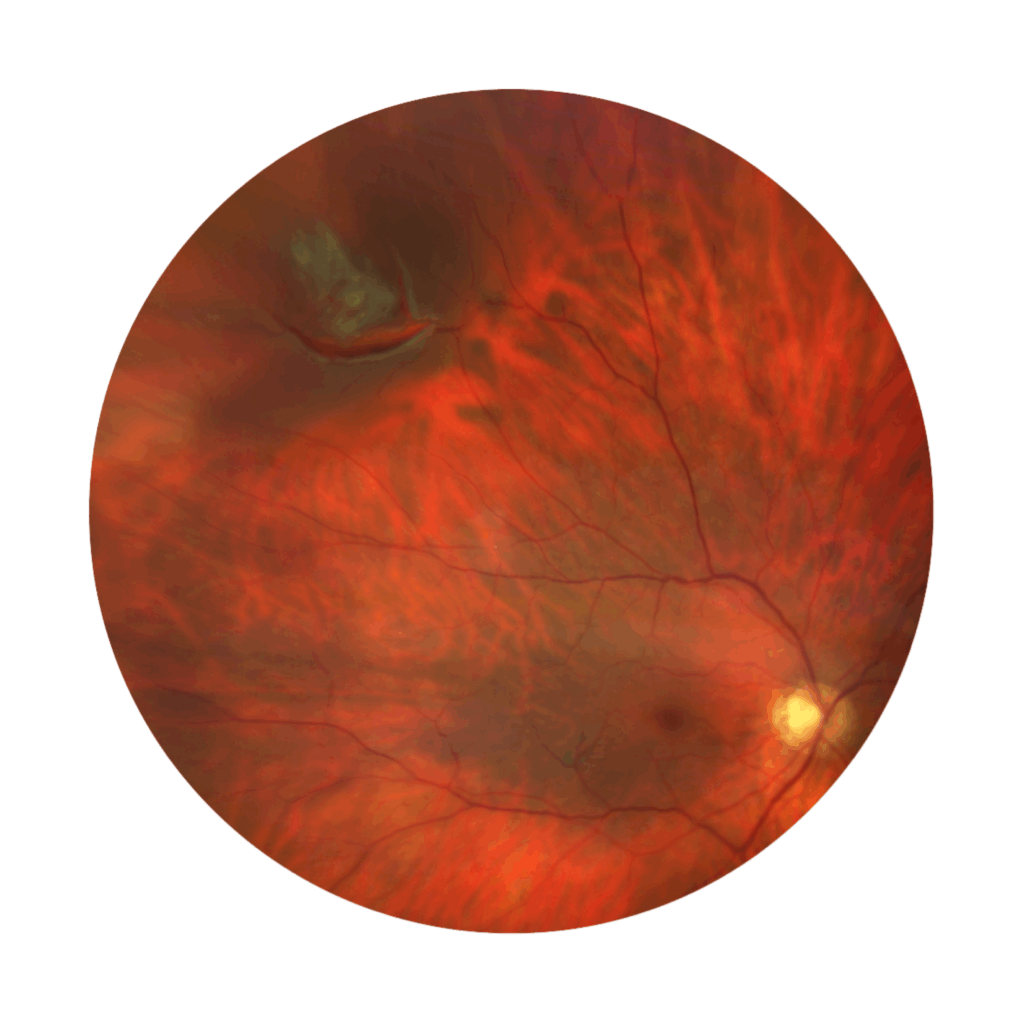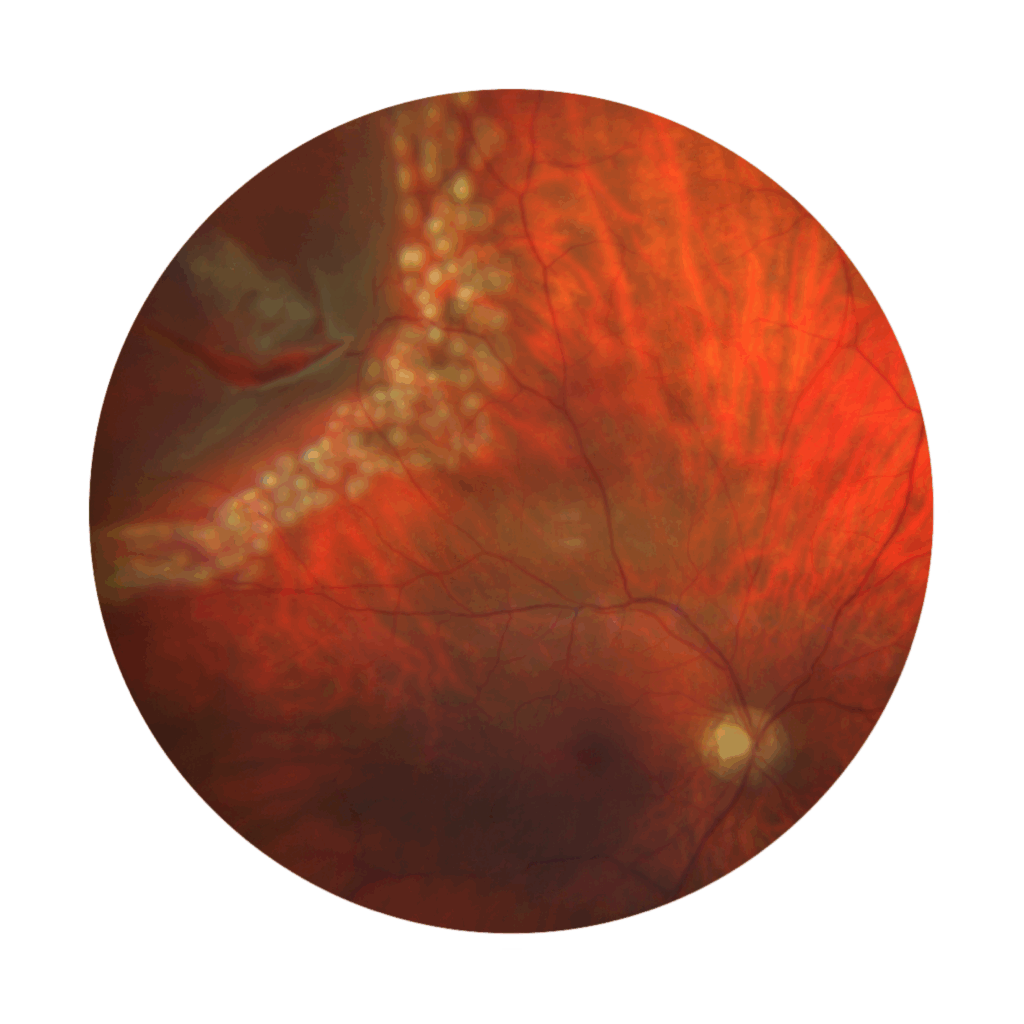
Hearing that you have a tear in the retina from your optometrist or ophthalmologist and that you will be needing laser treatment can feel overwhelming – especially if you’re also experiencing the unsettling symptoms of retinal tears such as flashes and floaters.
You are likely to wonder what it all means and what comes next. How does the laser treatment work to seal the tears in the retina back in place? Let’s walk through it together.
💡What is a Retinal Tear?
A retinal tear occurs when the light-sensitive thin layer of tissue at the back of your eye—the retina—develops a break or rip. This can happen spontaneously or as a result of injury to the eye and it may lead to symptoms such as:
- Sudden flashes of light
- New or increased floaters, or a sudden onset of floaters
- A shadow, curtain, cloud or cobweb moving across part of your vision
If you are short-sighted or have weak areas in the retina which have been identified by your optometrist or ophthalmologist (lattice degeneration), the risks of developing tears in the retina is higher. The same goes for a family history of retinal tears or retinal detachment.
🧭 Could a retinal tear lead to a retinal detachment? What happens if it is left untreated?
If a retinal tear is left untreated, it can potentially progress to a retinal detachment, which is serious and sight-threatening. Think of the tear in the retina like a tear in the wallpaper. If fluid seeps into this tear and the surrounding area, then the wallpaper may start to peel off.
🔆 How does barrier laser treatment work?
Treatments for retinal tears like barrier laser treatment are highly effective and can prevent serious complications like a retinal detachment. So how does it work?
Barrier laser treatment — also known as laser retinopexy — is a procedure used to seal the retina around the tear. The laser creates small welding spots that form scar tissue, acting as a “barrier” to prevent the tear from progressing into a retinal detachment. Occasionally treatment may need to be done in the operating theatre, combined with cryotherapy (” freezing laser” ). Most retinal tears require one treatment but occasionally multiple treatments may be required.


🛠️ How is the Procedure Performed?
- Setting: Usually done in an outpatient clinic
- Preparation:
- Eye drops are used to dilate your pupil
- Anaesthetic eye drops are instilled to reduce discomfort
- We also provide analgesics withe Panadol or Nurofen if required
- Technique:
- A contact lens is placed on your eye to direct and focus the laser
- You will see bright flashes of light during the procedure
- The procedure typically takes 15-20 minutes
⏱️ Duration and Recovery
- You may experience mild discomfort or aching afterward
- Vision may be blurry for a few hours
- You may resume normal activities within 1–3 days. It is best to avoid heavy lifting or strenuous exercise for a week
🚨 What to Watch For After Treatment
Contact your ophthalmologist immediately if you notice:
- New flashes of light or floaters
- A shadow or curtain moving across your vision
- Sudden loss of vision
These symptoms may indicate a retinal detachment, which requires urgent attention.
🧾 Follow-Up
- A follow-up appointment is usually within a month to check response and determine if any other tears have developed
- Additional laser treatment may be required if the tear enlarges or new tears develop
If you would like further information, please contact City Eye Centre on 07 3831 6888 or email us at appointments@cityeye.com.au.
